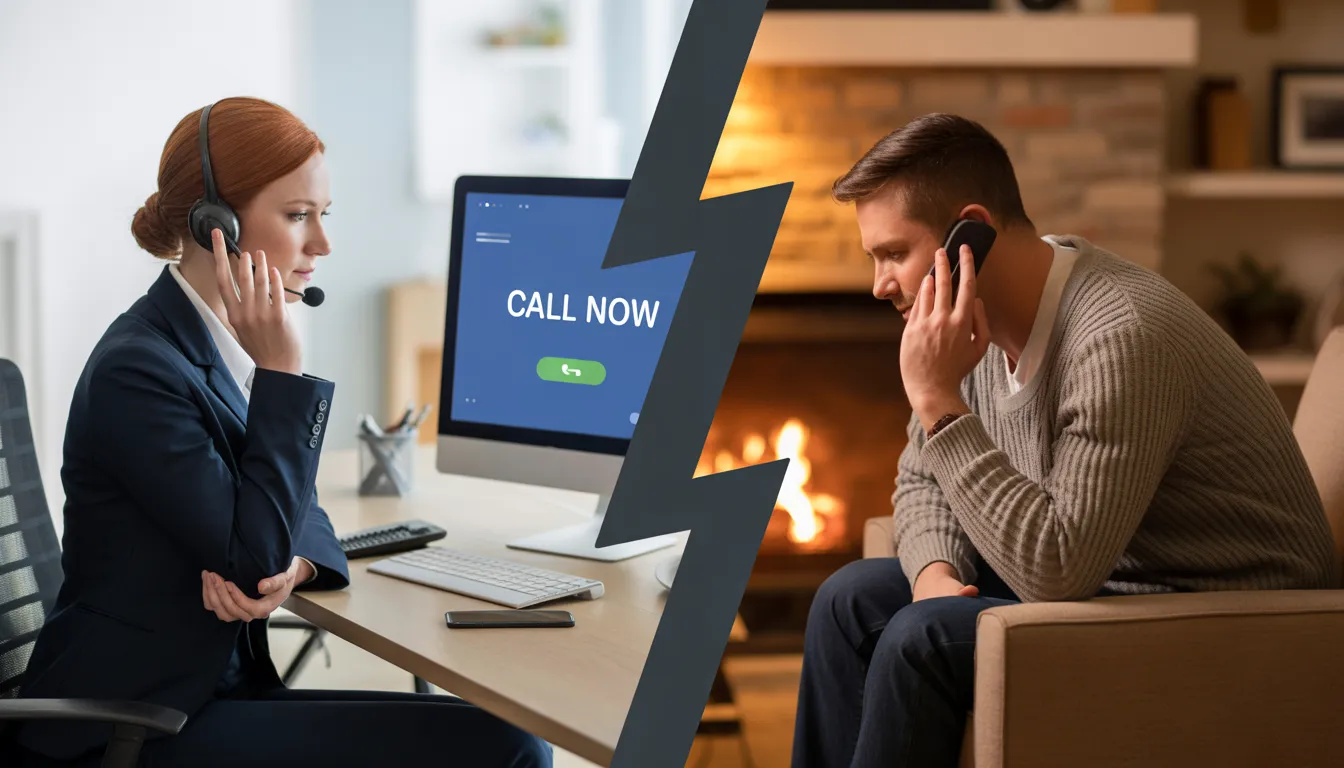The role of a Sales Development Representative (SDR) is crucial within a sales team. They are responsible for prospecting, qualifying leads, and laying the groundwork for successful customer relationships. However, there may come a time when replacing an SDR is necessary. Here, we will outline the key factors to consider, ensuring a smooth transition and maintaining the integrity of the sales process.
Importance of a Sales Development Rep
A Sales Development Representative (SDR) plays a crucial role in the modern sales process by serving as the initial point of contact between a company and potential customers. SDRs are responsible for qualifying leads, conducting preliminary research, and nurturing prospects through the early stages of the sales funnel. Their work is essential in streamlining the sales process, allowing account executives to focus on closing deals with high-quality leads. By effectively managing the top of the sales funnel, SDRs contribute significantly to a company’s revenue growth and overall sales efficiency. An SDR’s responsibilities include:
- Identify and qualify leads, ensuring a steady pipeline of potential clients.
- Bridge the gap between marketing and sales, improving communication and alignment.
- Generate initial interest and set the stage for account executives to close deals.
- Provide valuable customer insights that shape product development and marketing strategies.
Identifying the Need for Replacement
When to Consider Replacing a Sales Development Rep
Several indicators suggest it might be time to replace an SDR:
- Consistently missing targets and performance metrics.
- Lack of alignment with the company’s values and culture.
- Poor communication and collaboration with team members.
- Ineffective lead qualification and lack of prospects in the sales pipeline.
- Behavioral issues or a negative attitude that affects team morale.
Timely intervention and replacement are crucial to maintain a high-performing sales team and achieve business objectives.
Signs of Underperformance
Performance metrics reveal much about a Sales Development Rep’s effectiveness. Key indicators include consistently missing targets, low conversion rates, and decreased productivity over time. Persistent underperformance can hinder sales pipelines and overall organizational growth.
Evaluation of call quality and prospect interactions are essential. Poor communication skills, lack of follow-through, and inadequate product knowledge contribute to inefficiency. Regular performance reviews can highlight these issues early.
Feedback from Team Members
Team dynamics play a crucial role in overall productivity. When feedback from peers and supervisors indicates issues such as lack of collaboration, negative attitude, or disrupted workflows, it may signal deeper problems. Effective team members usually exhibit strong communication, support peers, and contribute positively to the work environment.
Anonymous surveys and one-on-one meetings can gather honest feedback without causing friction. Insights from these interactions help in making informed decisions about the need for a replacement.
Market Changes and Evolving Business Needs
Market dynamics and evolving business strategies necessitate agility in sales roles. New market trends, technology advancements, or shifts in consumer behavior might demand different skill sets. A Sales Development Rep must adapt to new tools, approaches, and customer expectations efficiently.
When a Sales Development Rep fails to align with updated market requirements or business goals, it’s time to reconsider their role. Ensuring the team evolves with the market prevents stagnation and promotes continuous growth.
Defining the Ideal Candidate
Key Skills and Qualifications
An ideal Sales Development Rep (SDR) should possess excellent communication skills. Both verbal and written abilities are critical as they frequently interact with potential clients.
Proficiency in sales tools and CRM software is essential. Basic understanding of lead generation techniques and the ability to analyze sales metrics help in targeting prospects better.
They must have strong problem-solving skills. Quick adaptability to changing market trends allows them to provide tailored solutions to potential clients. Attention to detail ensures accurate data entry and follow-up communications.
Experience and Background
Previous experience in sales or customer service roles offers an edge. They should be familiar with the sales process from prospecting to closing deals. Experience in B2B sales or SaaS products can be particularly beneficial.
A background in using CRM systems like Salesforce or HubSpot can streamline the transition process. Familiarity with sales automation tools is also advantageous.
Educational qualifications should include a degree in Business, Marketing, or related fields. However, extensive on-the-job training can sometimes compensate for lack of formal education.
Team Fit and Cultural Compatibility
Teamwork skills are vital. An SDR must collaborate effectively with marketing, sales, and customer success teams. Sharing insights and feedback can improve overall sales strategies.
Cultural compatibility ensures they align with the company’s values and mission. They should exhibit behavior that reflects the company’s ethos to maintain a cohesive work environment.
Adaptability to company culture improves morale and productivity. Hiring someone who fits culturally reduces turnover and enhances job satisfaction.
Recruitment Strategy
Effective recruitment strategy starts with understanding the specific needs of the team. Identifying the skills and experience required for a Sales Development Rep (SDR) is crucial. Establishing clear criteria helps streamline the recruitment process, ensuring only the best candidates are considered.
Where to Find Qualified Candidates
Various channels can be used to find qualified candidates. LinkedIn is a prime source for professional networking and job listings. Leveraging social media platforms where sales professionals are active, such as X (Twitter) and industry-specific forums, can also yield good results. Employee referrals are another valuable source, as they often recommend candidates who fit the company’s culture. Job fairs and sales conferences can connect companies directly with talented individuals.
Crafting a Compelling Job Description
A compelling job description is essential to attract the right candidates. It should include a clear title, summary of the role, and key responsibilities. Necessary skills and qualifications must be listed. Make the company culture and benefits clear to prospective employees. Highlighting opportunities for growth and the potential impact they can have on the company can attract highly motivated individuals.
Leveraging Recruitment Agencies and Job Boards
Recruitment agencies, with sales development representative recruiters, specialize in finding the right talent. They have extensive networks and can save time by screening candidates. Agencies often have a deeper understanding of industry-specific requirements. Job boards such as Indeed, Glassdoor, and Monster are excellent for posting job listings. Many job boards allow for targeted ads to reach a specific audience, increasing the likelihood of attracting qualified candidates.
Replacing an SDR requires a strategic approach. With clear criteria, effective channels, compelling job descriptions, and leveraging specialized resources, finding the right candidate becomes manageable and efficient.
The Interview Process
Preparing Effective Interview Questions
The selection of questions aims to assess a candidate’s competency and fit for the role. Questions should cover areas like sales experience, industry knowledge, and situational responses. Behavioral questions can reveal insights into how a candidate might handle future scenarios. Including a mix of open-ended and direct questions helps gauge problem-solving abilities and communication skills.
Conducting Initial Screening Interviews
Initial screenings help narrow down the candidate pool. Conduct these through phone or video calls. Focus on basic qualifications, experience, and initial impressions of communication skills. These screenings should be brief, around 15-20 minutes, to determine if a candidate merits further evaluation. Documenting impressions and aligning them with role requirements ensures an efficient screening process.
In-Depth Interview Techniques
In-depth interviews are crucial for evaluating fit and potential. Use STAR (Situation, Task, Action, Result) method to explore candidates’ past experiences. Role-play scenarios test a candidate’s sales approach and adaptability. Provide real-life cases or challenges the company faces. This gives a clearer picture of how a candidate might perform on the job.
Involving Multiple Stakeholders
Involving various team members offers diverse perspectives on the candidate. Sales managers, HR representatives, and potential team members bring unique insights. Multi-stakeholder interviews help validate a candidate’s fit from different angles. Structured feedback forms and scoring systems keep evaluations consistent and objective.

Onboarding and Training
Creating a Comprehensive Onboarding Plan
A comprehensive onboarding plan for a new Sales Development Representative (SDR) lays the groundwork for their success. Focus on technical training, role-specific duties, and an overview of company culture. The first week should contain introductions to team members, a tour of the office, and an orientation covering company policies.
This plan must also include an outline of the SDR’s daily, weekly, and monthly responsibilities. A structured onboarding schedule makes it easier for the new hire to understand their role and the company’s expectations.
Providing Resources and Training Materials
Equip the SDR with all necessary resources and training materials. This may include sales scripts, CRM software guides, product manuals, and access to industry-relevant courses. Look for tools that enable mock calls or role-playing scenarios.
Organize these resources in an easily accessible online repository. Documenting procedures and best practices ensures they have a reference for any questions or issues that arise.
Setting Clear Expectations and Goals
Set clear expectations and goals from the outset. Define what success looks like in their role, how performance will be measured, and the targets they need to meet. Often, key performance indicators (KPIs) include the number of calls made, emails sent, and meetings scheduled.
Communicate these metrics clearly and frequently. This clarity helps the new SDR stay focused and aligned with the company’s objectives.
Continuous Support and Feedback
Ongoing support and feedback are crucial for the development of the SDR. Schedule regular one-on-one meetings to review their performance, address concerns, and provide guidance. Constructive feedback helps them understand areas needing improvement and reinforces positive behaviors.
Provide access to peer support through mentorship programs or team collaboration tools. Continuous development can also be encouraged through ongoing training sessions and workshops to sharpen their skills.
Monitoring and Evaluation
Setting Up Performance Metrics
Establishing clear performance metrics is essential for assessing the effectiveness of a Sales Development Representative (SDR). Key performance indicators (KPIs) to consider include:
- Number of daily calls or emails
- Lead conversion rate
- Follow-up effectiveness
- Appointment setting
These metrics should be quantifiable and directly tied to business goals.
Regular Check-Ins and Reviews
Frequent check-ins ensure SDRs stay aligned with expectations. Schedule weekly or bi-weekly meetings to discuss progress. Regular reviews facilitate timely feedback, enabling SDRs to make necessary adjustments. These sessions should be structured but also allow for open discussion, focusing on both achievements and areas for improvement.
Adjusting Strategies Based on Performance
Adapting strategies based on an SDR’s performance is crucial. Analyze data collected from performance metrics to identify trends and patterns. If an SDR is underperforming in certain areas, offer targeted training or alter their approach. High-performers can provide insights and best practices that can be standardized across the team.
Continuous refinement of strategies based on real-world performance data helps maintain a high level of productivity and effectiveness among SDRs.
Conclusion
Replacing a Sales Development Rep is an opportunity to bring fresh energy and new skills to the sales team. While it can be a challenging process, a careful and methodical approach ensures the best outcomes. Every step, from defining the role to onboarding, plays a crucial part in the seamless integration of the new hire. The effort invested in a smooth transition reaps long-term benefits in terms of team efficiency, client satisfaction, and overall sales success. Companies should view this as a strategic move towards continuous improvement and growth.
FAQ
They should have strong communication skills, a good understanding of sales processes, the ability to handle rejection, and basic knowledge of CRM tools. Experience in similar roles is preferable.
It typically takes 30 to 60 days, depending on the urgency of the role and the availability of qualified candidates. The timeline includes job posting, interviewing, and onboarding.
The onboarding process should include training on company products and services, sales techniques, CRM tools, and integration into the team culture. It should last 2 to 4 weeks for optimal effectiveness.
Maintain open communication with the current team, outline clear expectations, provide thorough training, and consider a mentorship program. Regular check-ins can also help address any issues early.
Essential tools include CRM software, email marketing platforms, lead generation tools, sales engagement software, and performance analytics tools.
Costs include recruitment fees, training expenses, time spent on interviewing and onboarding, and potential revenue loss during the transition. This can amount to several thousand dollars, especially if using sales development representative recruiters.
Cultural fit is pivotal as it impacts team cohesion, employee satisfaction, and overall productivity. Candidates should align with the company’s values and work culture.
Key metrics include lead conversion rate, number of qualified leads generated, call and email activity, sales pipeline contribution, and overall revenue impact.
Provide competitive compensation, clear career progression, regular feedback, opportunities for skill development, and maintain a positive workplace culture.







